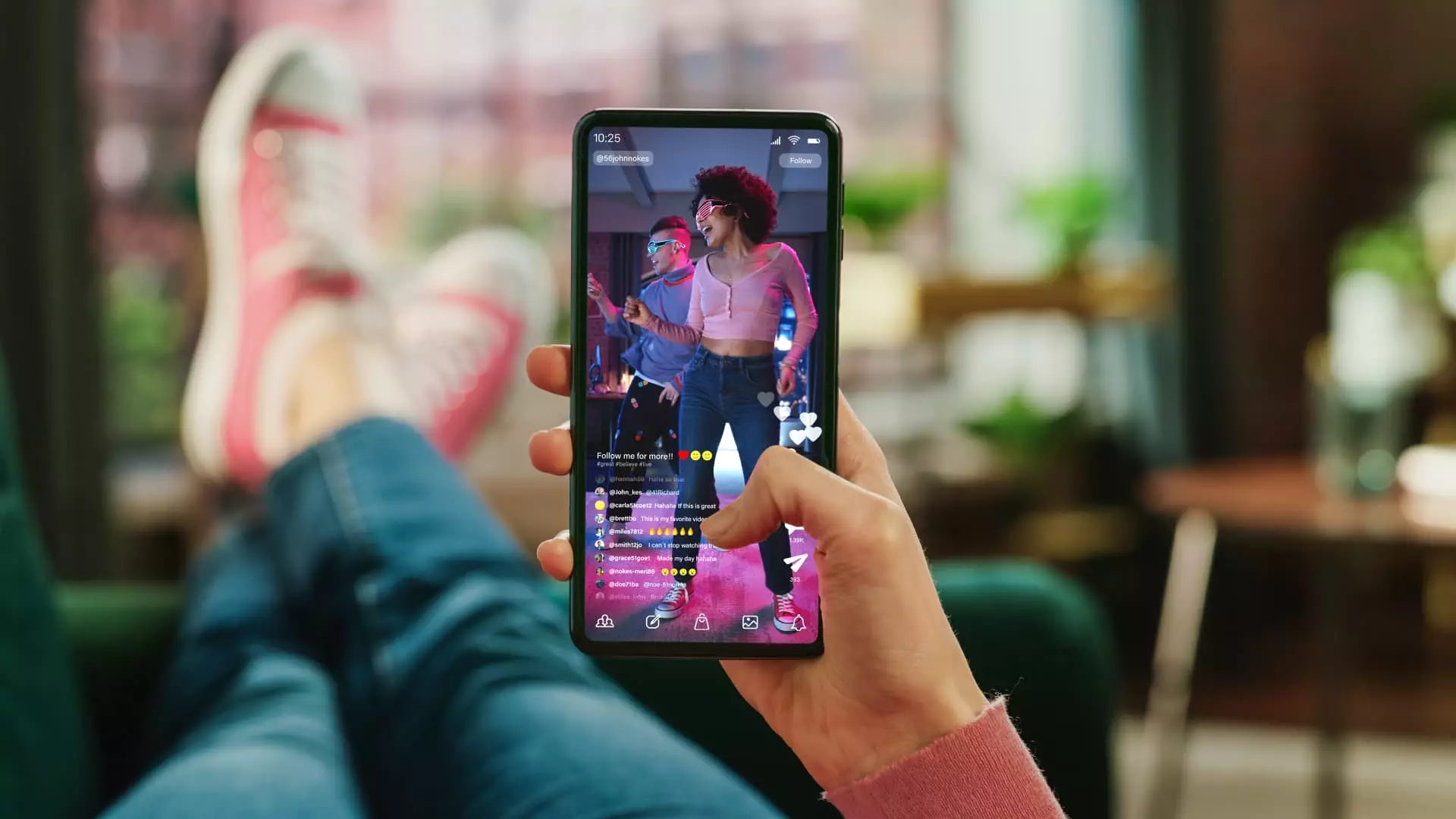In the ever-evolving realm of social media, one platform has cemented its status as a force to be reckoned with: TikTok. Since its global launch in 2016, this app, owned by ByteDance, has not just entered the scene but has fundamentally altered how users consume content online. With an astounding 1.12 billion active monthly users as of recent data, TikTok’s popularity among younger generations is a clear signal that traditional platforms are no longer the sole gatekeepers of digital interaction. Users in the U.S. dedicate an average of 108 minutes each day to scrolling through its endless feeds, indicating not just usage, but an immersion into a new culture of bite-sized entertainment.
What’s particularly intriguing about TikTok is its expertly crafted algorithm. It serves users content that is precisely tailored to their tastes, encouraging longer engagement times and a more personal connection with creators compared to other platforms. This has led social media giants like Meta and Google to rethink their strategies, scrambling to develop features meant to replicate TikTok’s captivating experience. Jasmine Enberg, an analyst at Emarketer, succinctly stated that “TikTok sets the tone for everyone else,” highlighting the platform’s influence over digital trends, news, and even shopping habits.
The Competitive Response
In the shadow of TikTok’s dominance, competitors are furiously launching features designed to lure users away. Instagram Reels has emerged as a prominent challenger, alongside YouTube Shorts. Even LinkedIn has ventured into the territory of short-form video, attempting to capture this new wave of engagement. However, despite these efforts, the stark reality for rivals is that replicating TikTok’s algorithmic savvy remains a significant hurdle. TikTok’s continuous evolution—integrating e-commerce options and adapting to include longer video formats—only amplifies the challenge for other platforms.
While the drive for engagement is understood, it raises concerns about the implications of this type of content consumption. Creators like Alyssa McKay openly discuss their habit of “doom scrolling,” a reflection of society’s troubling relationship with social media. What happens when users’ attention is conditioned to seek immediate gratification? Research from experts such as Dr. Yann Poncin warns that the consequences may include disrupted sleep patterns and heightened anxiety, particularly among younger audiences. The model of content consumption has shifted from narrative journeys to quick dopamine hits, which seems to inhibit the ability to engage deeply with content—an alarming trend that we must confront.
The Financial Conundrum of Short-Form Creators
A vibrant short-form video culture presents an irony that can’t be overlooked: While virality is certainly easier to attain, monetizing that success poses an uphill battle. Unlike their long-form counterparts on platforms like YouTube, where ad placements can be strategically woven throughout content, short clips provide limited opportunities for advertisers. Despite the fact that TikTok racked up an estimated $23.6 billion in ad revenue last year, many creators find themselves earning merely a few dollars per million views—an unsustainable model.
Interestingly, Instagram has begun experimenting with new monetization avenues, introducing tools like “Trial Reels,” which offer creators a low-risk way to test content formats with select audiences. Yet, Meta has made it clear that finding a profitable way to monetize Reels remains a work in progress. This struggle highlights the broader issue that while the consumer-facing side of short-form video is thriving, the creators who fuel the platform are often left grappling for ways to turn their engagement into a stable income.
A Potential Shift in Advertising Power
While lawmakers assess TikTok due to its Chinese ownership, it creates a unique landscape for competitors like Meta and YouTube. Should TikTok face restrictions in the U.S., these platforms stand to gain an estimated 50% of reallocated ad dollars, revealing a potential silver lining for rivals. The pressure mounts on TikTok to not only maintain its dominance but to continually innovate in a way that keeps its audience engaged and its creators compensated.
As we navigate this intricate landscape of digital engagement, it remains crucial to consider the ramifications of short-form content on society’s collective psyche. The challenge is not merely about matching TikTok’s success but finding sustainable models that address both user engagement and creator welfare. The next few years will be pivotal in shaping the narratives of not just TikTok and its challengers but also the future of social media itself.


Leave a Reply